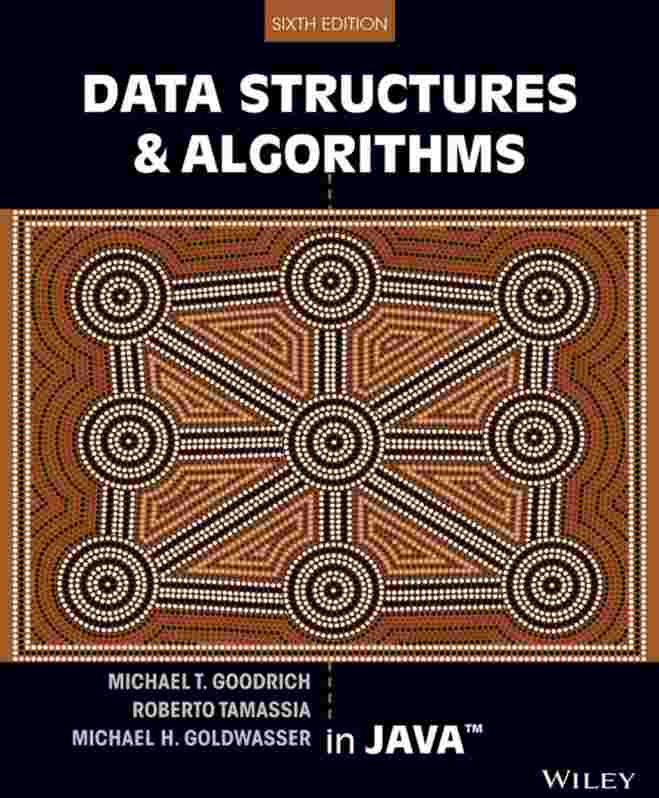Imagine a world where you can build software that efficiently manages complex data, like managing a million customers’ orders on an e-commerce platform or navigating intricate social networks. This is the realm of Java programming and data structures – a powerful combination that empowers you to create sophisticated and scalable applications. If you’re eager to embark on this exciting journey, then this guide is your key to unlocking the world of Java programming and data structures.

Image: 101onlinecourses.com
Are you ready to dive into a world of code that shapes how we interact with technology? From the foundation of Java to the building blocks of data structures, this guide will break down these concepts into bite-sized pieces, paving the way for you to master this essential programming duo.
The Foundation: Java Programming
Java isn’t just another programming language; it’s a versatile, object-oriented language that’s used to build everything from mobile apps to enterprise-level software. Its “write once, run anywhere” motto means you can write Java code on one platform and run it on virtually any other machine without needing extensive modification. This ensures that your code is portable and can function across diverse environments.
Understanding the Core Concepts:
- Object-Oriented Paradigm: Java embraces the object-oriented paradigm, which organizes code into modular units called objects. Objects encapsulate data and behavior, promoting code reusability and easier maintenance.
- Syntax and Language Features: Java uses a syntax that is relatively easy to learn, and its features like classes, objects, methods, and variables provide a structured approach to programming.
- Compilation and Runtime: Java code is first compiled into bytecode, a platform-independent format, and then executed by a Java Virtual Machine (JVM) on different platforms.
The Building Blocks: Data Structures
Now, let’s move on to data structures. Think of them as the organizational blueprints for your data. Just like a well-designed house needs a solid framework, your applications need efficient data structures to store and manipulate information effectively.
Types of Data Structures
- Arrays: The simplest data structure, arrays are like containers that hold a fixed number of elements of the same data type. They’re efficient for accessing elements directly but lack flexibility when it comes to resizing.
- Linked Lists: Linked lists are like chains of nodes, each containing data and a pointer to the next node. This allows for dynamic resizing and insertion/deletion operations at any point in the list.
- Stacks and Queues: These are linear data structures that follow specific rules for accessing data. Stacks follow a Last-In, First-Out (LIFO) principle, while queues follow a First-In, First-Out (FIFO) principle. Imagine a stack of plates: you can only add or remove a plate from the top.
- Trees: Trees are hierarchical structures where each node can have multiple child nodes. They excel at organizing data in a structured and efficient way, making them ideal for searching and sorting.
- Graphs: Graphs represent relationships between entities, often depicted as nodes connected by edges. They’re useful for modeling networks, social connections, and maps.
Combining the Power of Java and Data Structures
Java provides a robust set of classes and libraries for working with data structures. For example, you can leverage Java’s ArrayList class to create dynamic arrays or use the LinkedList class to implement linked lists. These classes encapsulate data structures, allowing you to focus on building your application’s logic without worrying about the underlying implementation details.

Image: www.acbook.com.my
Diving Deeper with “Introduction to Java Programming and Data Structures PDF”
Ready to take your knowledge to the next level? An “Introduction to Java Programming and Data Structures PDF” can be your dedicated guide. These valuable resources are packed with examples, explanations, and practice exercises designed to solidify your understanding. Think of it as having a personal tutor at your fingertips, ready to answer your questions and guide you through the intricacies of Java and data structures.
Finding the Right PDF for Your Needs
- University Textbooks: If you’re enrolled in a computer science course, look for textbooks recommended by your professor. These books offer a comprehensive and in-depth exploration of Java programming and data structures.
- Online Resources: Websites like GitHub, Coursera, and Khan Academy offer free resources, including PDFs, tutorials, and code samples.
- Experienced Programmer Guides: Experienced Java programmers often create and share their own guides and cheat sheets, which can be excellent resources for practical examples and tips.
The Benefits of Mastering Java Programming and Data Structures
- Enhanced Problem-Solving Skills: Learning Java programming and data structures equips you with the ability to break down complex problems into smaller, manageable parts and develop efficient algorithms to solve them.
- Building Scalable Applications: Data structures form the backbone of applications. By understanding them, you can build software that efficiently handles large amounts of data and user traffic.
- Opening Doors to Career Opportunities: Java is a highly sought-after skill in the software development industry. Mastering Java and data structures can unlock opportunities for high-paying jobs in software development, data science, and related fields.
Introduction To Java Programming And Data Structures Pdf
Embark on Your Journey Today
The world of Java programming and data structures is vast, but it’s also incredibly rewarding. Whether you’re a beginner taking your first steps into programming or an experienced developer looking to enhance your skills, this guide has equipped you with the knowledge to get started.
Don’t hesitate to explore the resources mentioned, ask questions, and most importantly, practice! The more you work with Java and data structures, the more confident you’ll become.
Ready to dive in? Start by finding that “Introduction to Java Programming and Data Structures PDF” that speaks to you. Your journey into the world of coding begins now.






